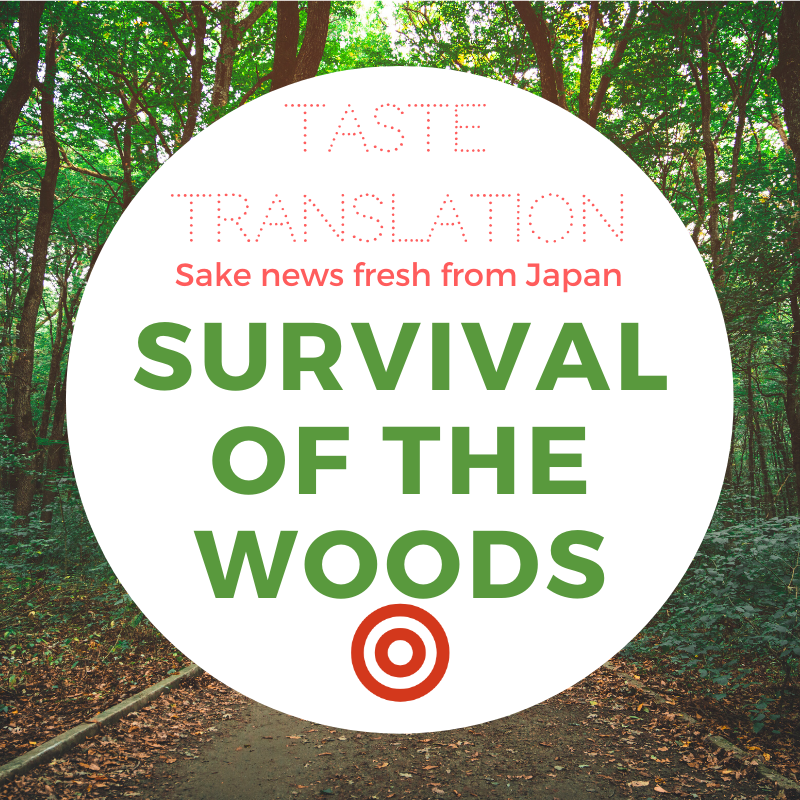
The Gendai IsMedia Finance/Business section features a long interview with Chōbe Yamamoto, 13th generation head of Yuchō Shuzō. Journalist Haruo Isshi asks him what the brewery has done to survive, and what he thinks the future holds.
Isshi points out that quirky junmai made by small breweries who aren’t chasing after the larger companies, including Kaze no Mori, Aramasa (Akita), Senkin (Tochigi) and Tanaka Rokujugō (Fukuoka) sometimes become so popular they’re hard to get hold of. What these breweries all have in common is that they didn’t let that opportunity pass them by, they invested in premises and equipment, planned for stable employment and either got involved in growing rice themselves or started actively supporting farmers.
Isshi mentions another recent trend: an increasing number of breweries getting involved in growing rice.
Including us, Yamamoto points out. They starting having a local variety called Akitsubo grown for us under contract about 10 years ago. Akitsubo was designated as a promoted variety by Japan Agriculture in Nara Prefecture, but was later dropped so no-one grew it any more. Akitsubo had been grown locally for a long time, and it was easy for Yuchō Shuzō to brew with, so they asked local farmers to grow it for us. Yamamoto thinks they’re the only people growing it at the moment.
He continues by stating that it goes without saying that nihonshu is something very ancient and unique to Japan. By making great nihonshu, they breathe life back into many aspects of Japanese culture.
The fields around they brewery have always been terraced paddy fields, and many of the ones their rice is now grown by contract in have been protected and passed down for many generations. When it comes to cost effectiveness, they’re not very productive. But if the fields were abandoned and left to return to woodland, wild boar would come down from the mountains. If they can protect and communicate the way Japanese people have lived their lives from ancient times, with this pattern of mountains, border zones and inhabited areas, they can make the countryside more attractive – a place more people want to visit or even live in.
So they’re committed to using local rice, prepared to pay a bit more for it, and feel they have to make Kaze no Mori something the farmers are proud to have grown the rice for. So it’s important to make great nihonshu, and to communicate all of this to the customer.
Scenes of brewing and selling nihonshu are some of the archetypal images of Japan, and it helps them preserve their beautiful countryside.
A fantastic motivation for making great nihonshu, says Isshi. Yamamoto says he thinks hard skills are important in brewing. Say a small truck takes on a Lexus on a normal road. Will the truck win? Of course not. But on a narrow track between rice fields, a small truck will come out on top every time. The hard skills have to be right for the road you’re taking. If nihonshu becomes a one-manufacturer race with nothing but small trucks, we’re in trouble. Each kura is on its own path. If you try driving the same car on every single road, you won’t get anywhere.
That’s because there’s a limit to what you can achieve with hard skills. He wants to break through that limit. The brewery has lots of fantastic employees, and for Yamamoto they discovered what kind of nihonshu they wanted to make when their hard and soft skills meshed. Even though brewing isn’t really something you win or lose. That’s why they developed filling equipment and tanks that incorporate fine controls like temperature management, and improve their hard skills little by little every year.
Isshi asks what’s going to happen in the future. Looking back over the last 10 years, Yamamoto muses, everyone had a bottle of shōchū kept for them at their favourite bar. Or they were drinking wine. That’s why nihonshu has had to become something you can drink in style. In the last 10 years, too much nihonshu was sold too quickly. It has to penetrate the market slowly and thoroughly. What brewers need to think about now is whether or not they choose highly sustainable sales and production. In other words, making sure their customers don’t get tired of their products. That means quality. And the brewer has to provide the information for the story they never tire of hearing.
For drinkers who buy bottles of wine for JPY 1,000 or 1,500 to open the fridge and take out a bottle of nihonshu, Yamamoto speculates, they need to revive both retailers and farmers. And to do that they need both a story and excellent nihonshu.
—————————————————
If you missed part 1 of this interview, it’s in the previous post!
Links
- Original article (Japanese, Gendai IsMedia, 4 November 2019)
Want Japanese sake news straight to your inbox?
The translations/summaries of Japanese language news articles and other content provided on this site are part of a personal project to increase the amount of information about Japanese sake available in English.
Coverage of an organisation, product or event does not in any way imply approval or endorsement.
All translations/summaries and other content are © 2017-2021 Arline Lyons.